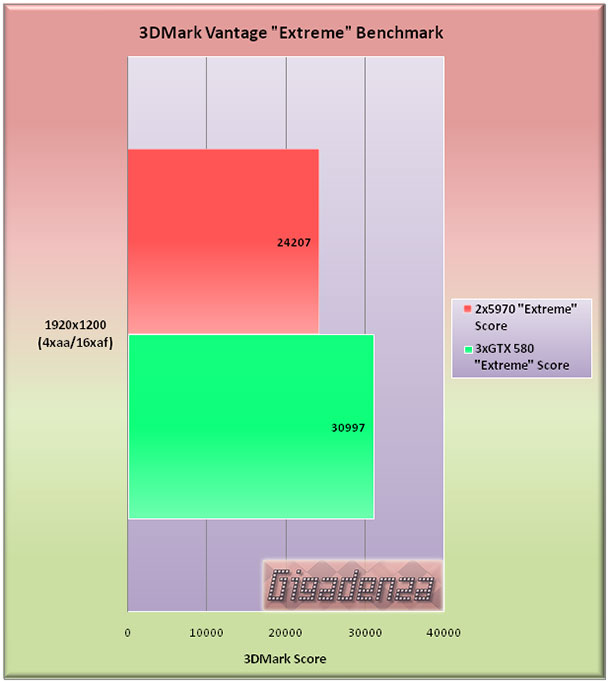Three Way SLI and Quadfire Benchmarks (2010).
A couple of further points regarding the test configuration. For reasons beyond my control, by the time the Nvidia cards came into my possession, I no longer had access to the 5970s. At the time of testing the ATI cards, the latest stable driver available was the Catalyst 10.7 package, which was released in August of 2010. The GTX 580 emerged in mid November and its launch coincided with Nvidia’s 262.99 WHQL driver, the first to officially support the card. Had both setups been tested and analyzed simultaneously, the ATI platform would have used the Catalyst 10.11 drivers, which may well have yielded superior results to those observed in this review though I would hasten to add, probably not enough to tip the balance in tests where Nvidia holds a commanding lead. Those wishing to decisively research such an assertion are most welcome!
For each test, where possible, the minimum, average and maximum frame rates were recorded and have been included in the accompanying bar graphs for reference. The two most important figures are those for the minimum and average framerates since it is these that have the biggest impact on user interaction and ultimately determine a smooth, responsive and enjoyable gaming experience or one riddled with choppiness and frustration.
Test System Configuration.
– Asus P6T7 Supercomputer.
– Intel Core I7 980X 3.33ghz (stock speed with Intel Turboboost enabled).
(2x in RAID 0 array, 2x non-RAID. Game installed on RAID array).
– Drivers, 262.99 Nvidia Forceware and ATI Catalyst 10.7 , both official releases.
– 6GB Kingston HyperX 1866mhz (clocked at 1333mhz, latency 9-9-9-24).
– Silverstone Strider 1500w.
– 4x Samsing SSDs – Pb22-J 256GB.
– Auzentech X-Fi Home Theatre HD.
– Windows 7 x64.
All cards run at their default “stock” speeds.
Test 1. 3dMark Vantage “Extreme” Benchmark.
3 Way SLI GTX 580 vs. Crossfire HD 5970 - Vantage
Get the Flash Player to see this player.
The 580s hold a significant lead in both tests and turn in an overall score that is almost 30% higher relative to ATI’s pairing. Moreover, in the Calico test, stuttering is far more evident with Quadfire despite the average framerate being in excess of 60 frame per second. The cause is likely to be a combination of the comparative lack of memory per GPU and the more complicated techniques adopted by the drivers when expoiting a four way GPU setup.




